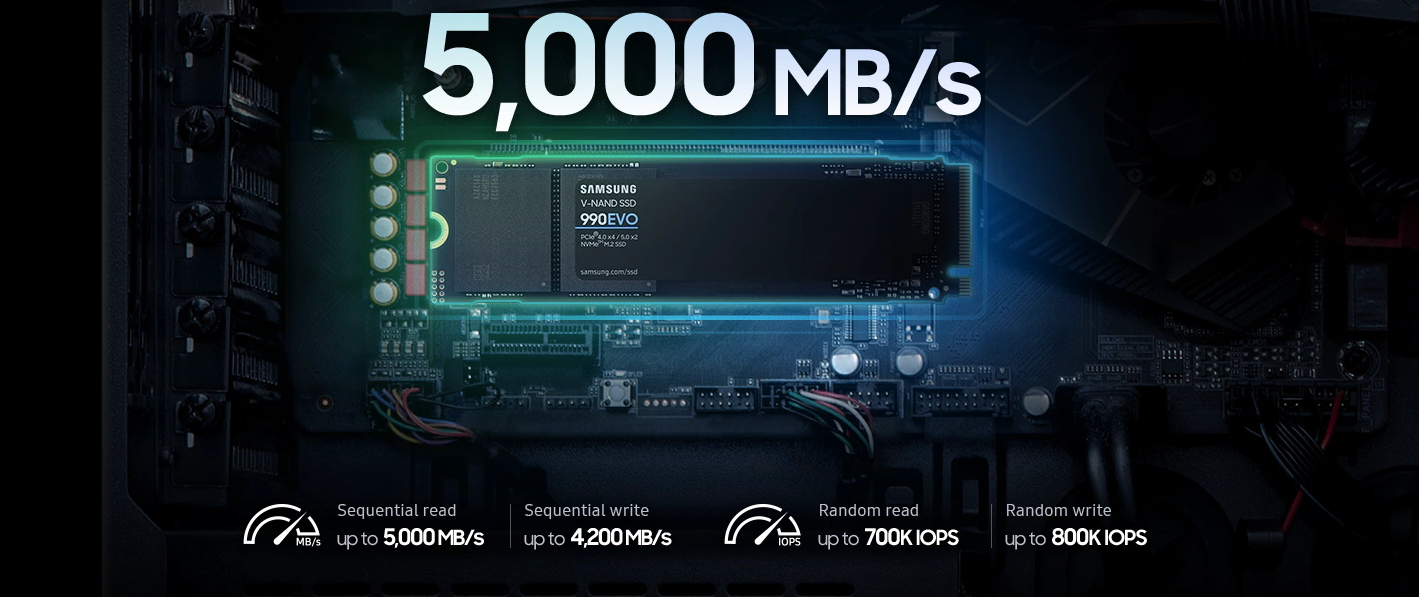Strong firewall software is crucial for safeguarding your sensitive data and digital assets in an era of growing cyberthreats and vulnerabilities. The capabilities of firewall systems progress along with technology, providing cutting-edge features to defend your network from new threats. Here is our pick of the top firewall apps for 2024 to help you strengthen your digital defenses. These firewall software options, which range from user-friendly options for home users to enterprise-grade solutions, are made to offer complete security against cyber attacks.

Table of Contents
1. The Next-Generation Firewall from Palo Alto Networks
Introducing the Palo Alto Networks Next-Generation Firewall, renowned for its centralized management, application visibility, and advanced threat protection features.
An overview of its cloud-based threat intelligence, SSL decryption, and intrusion prevention system (IPS) for proactive attack detection and response.
Advanced Threat Prevention: Palo Alto Networks NGFW uses cutting-edge threat detection methods, such as behavioral analysis and machine learning, to quickly detect and neutralize both known and unidentified threats.
Application Visibility and Control: The NGFW enables enterprises to monitor and manage application usage throughout their networks, assuring compliance and boosting security, thanks to its Application Layer (Layer 7) visibility and control features.
Intrusion Prevention System (IPS): An integrated IPS is part of the Network Gateway Firewall (NGFW) and works to prevent potential security breaches by proactively identifying and blocking hostile network traffic, thus reducing the chance of exploitation.
Palo Alto Networks NGFW provides SSL decryption features that enable enterprises to examine encrypted data, including that which is encrypted during SSL/TLS sessions, for security threats and weaknesses.
Palo Alto Networks Next-Generation Firewall offers centralized management features, powerful threat prevention capabilities, and comprehensive cybersecurity protection to assist enterprises in successfully defending against contemporary cyber threats and safeguarding their network infrastructure.
2. Cisco Threat Defense with Firepower (FTD):
A brief introduction to Cisco Firepower Threat Defense (FTD), which provides network segmentation, sophisticated malware protection, and integrated threat defense.
An overview of its automated policy enforcement, real-time threat intelligence feeds, and unified administration interface for improved security posture.
Integrated Threat Defense (ITD): Cisco FTD creates a single, cohesive security platform by merging firewalling, intrusion prevention, advanced malware protection, and URL filtering. Organizations may efficiently detect and mitigate a wide range of cyber threats by using this integrated approach.
Advanced Malware Protection (AMP): Cisco FTD comes with AMP for Networks, which detects and blocks known and undiscovered malware in real-time using sophisticated sandboxing and file reputation analysis algorithms. It offers complete defense against ransomware, malware, and other cutting-edge dangers.
Intrusion Prevention System (IPS): Cisco FTD has a high-performance IPS engine that scans network traffic for patterns and abnormalities associated with known attacks. This helps enterprises identify and stop network-based threats before they have a chance to enter the network.
Application Visibility and Control: Cisco FTD enables enterprises to implement security policies based on application kinds, users, and content by giving them granular visibility and control over application traffic. This improves security posture and makes it possible to manage network resources more effectively.
3. FortiGate from Fortinet:
Introducing Fortinet FortiGate, a firewall, virtual private network, and intrusion prevention system that is well-known for its high-performance security features.
An explanation of its integrated SSL inspection, threat detection powered by artificial intelligence, and sandboxing features for detecting and thwarting sophisticated attacks.
Unified Threat Management (UTM): With the help of FortiGate’s UTM features, businesses may combine several security solutions into a single system. As a result, there is less complexity, easier management, and a decreased total cost of ownership (TCO).
FortiGate offers sophisticated firewall protection features, such as application control, stateful packet inspection, and user-based policies. It enables businesses to design detailed security rules to regulate traffic according to user identification, application, and content.
Intrusion Prevention System (IPS): An integrated IPS engine included into FortiGate keeps an eye on network traffic to spot dangers both known and unidentified. It detects and stops harmful behavior in real time using heuristic analysis, anomaly detection, and signature-based detection.
VPN Connectivity: IPsec and SSL VPN are two VPN technologies that FortiGate offers for secure remote access and site-to-site connectivity. To provide secure communication over public networks, it offers capabilities for access control, authentication, and encryption.
4. Next-Generation Check Point Firewall:
Overview of the Check Point Next-Generation Firewall, which includes threat simulation, zero-day protection, and a multi-layered security architecture.
An overview of its automated incident response, threat extraction, and unified management console for reducing security risks and guaranteeing compliance.
Advanced Security Avoidance: Check Point To defend against known and new cyber threats, NGFW uses several layers of security, such as intrusion prevention system (IPS), antivirus, anti-bot, and sandboxing technologies. It has real-time malware, ransomware, zero-day attack, and other complex threat detection and blocking capabilities.
Check Point for Application Control and Visibility Granular application control features provided by NGFW enable businesses to create and implement rules based on particular apps, users, and groups. It offers thorough insight into how applications are being used, assisting businesses in comprehending and efficiently handling network traffic.
Check Point: URL Filtering and Content Inspection With the help of NGFW’s powerful URL filtering and content inspection features, businesses can prevent access to dangerous websites, offensive content, and web apps. It can detect and reduce security vulnerabilities by inspecting SSL-encrypted traffic.
Check Point is the symbol for centralized management. With the help of a centralized management dashboard, administrators can define rules, keep an eye on security events, and create reports for scattered network environments all from one single point of contact with NGFW. It provides flexibility and scalability to accommodate the demands of big businesses and service providers.
5. The firewall Sophos XG:
Introducing the Sophos XG Firewall, which provides capabilities like web filtering, application management, and advanced threat prevention.
An overview of its integrated reporting, threat intelligence sharing, and synchronized security approach for total visibility and control over network traffic.
Protection for Next-Generation Firewalls (NGFWs): Sophos XG Firewall offers complete firewall protection, comprising intrusion prevention, application control, stateful packet inspection, and user-based rules. It enables businesses to establish detailed security regulations according to application, user, and content criteria.
Advanced Threat Protection: To identify and stop known and new cyberthreats in real-time, Sophos XG Firewall incorporates advanced threat detection and prevention technologies like ATP, IPS, sandboxing, and machine learning. It offers defense against ransomware, malware, zero-day exploits, and other advanced threats.
Secure VPN communication: Industry-standard protocols including IPsec, SSL VPN, and L2TP are supported by the Sophos XG Firewall for secure remote access and site-to-site VPN communication. To provide secure communication over public networks, it offers capabilities for access control, authentication, and encryption.
Web Filtering and Application Control: Organizations can enforce policies based on website categories, URL groups, and application characteristics with the help of the robust web filtering and application control tools provided by Sophos XG Firewall. It limits the use of applications that are not related to business and aids in preventing access to harmful or inappropriate content.
6. Firewall SonicWall TZ Series:
Introducing the SonicWall TZ Series Firewall, renowned for its scalable security solutions, which encompass content filtering, VPN capabilities, and intrusion prevention.
An overview of its cloud-based management, real-time threat intelligence, and deep packet inspection capabilities for distributed network security.
Protection for Firewalls: The SonicWall TZ Series provides cutting-edge firewall features such as application control, intrusion prevention system (IPS), and deep packet inspection (DPI). By giving businesses the ability to design specific security policies according to user, application, and content, it offers superior defense against online attacks.
Secure VPN communication: Industry-standard protocols including IPsec, SSL VPN, and L2TP are used by SonicWall TZ Series firewalls to enable secure remote access and site-to-site VPN communication. To guarantee safe communication across open networks, they offer capabilities for access control, authentication, and encryption.
Advanced Threat Prevention: Cloud-based sandboxing, anti-malware, and real-time threat intelligence are just a few of the advanced threat detection and prevention technologies that SonicWall TZ Series firewalls incorporate. Real-time threat detection and blocking is possible for both known and unknown threats, such as malware, ransomware, and zero-day assaults.
Organizations may impose policies based on website categories, URL groups, and application characteristics thanks to the powerful content filtering and application control features included in SonicWall TZ Series firewalls. They aid in limiting the use of non-business applications and preventing access to harmful or improper content.
7. Firebox WatchGuard:
A brief introduction of WatchGuard Firebox, which offers secure Wi-Fi connectivity, stateful packet inspection, and cutting-edge malware prevention.
An overview of its threat monitoring and response services, DNS-level security, and multi-factor authentication for defending networks against changing threats.
Firebox appliances provide a wide range of unified threat management features, including as web filtering, application control, intrusion prevention, firewalling, and antivirus software. The complexity of implementing various security solutions is decreased and security administration is made simpler with this integrated approach.
Advanced Threat prevention: Cloud-based sandboxing, threat intelligence feeds, and real-time malware detection are just a few of the advanced threat prevention capabilities that Firebox offers. With the use of these tools, enterprises can identify and stop ransomware and zero-day attacks, among other known and undiscovered dangers.
VPN communication: Firebox uses industry-standard protocols like IPsec, SSL VPN, and L2TP to enable secure remote access and site-to-site VPN communication. To provide secure communication over public networks, it offers capabilities for access control, authentication, and encryption.
Centralized administration: WatchGuard’s cloud-based administration platform, WatchGuard Cloud, or its user-friendly management panel, WatchGuard System Manager (WSM), can be used to centrally administer Firebox appliances. With this centralized management method, administrators can monitor security events, set up policies, and create reports all from a single interface.
8. CloudGen Firewall Barracuda:
A brief introduction of Barracuda CloudGen Firewall, which provides secure SD-WAN features, application control, and sophisticated threat protection.
An overview of its integrated WAN optimization, intelligent traffic routing, and centralized management to guarantee excellent performance and dependability.
Protection from Next-Generation Firewalls (NGFWs): The Barracuda CloudGen Firewall provides sophisticated firewall features such as application control, intrusion prevention, stateful packet inspection, and user-based policies. To defend against a variety of cyberthreats, it enables enterprises to establish granular security policies based on application, user identification, and content.
Secure VPN communication: Using industry-standard protocols including IPsec, SSL VPN, and L2TP, the CloudGen Firewall enables secure remote access and site-to-site VPN communication. To provide secure communication over public networks, it offers capabilities for access control, authentication, and encryption.
Advanced Threat Protection: Real-time threat intelligence, cloud-based sandboxing, antivirus software, and other cutting-edge threat detection and prevention technologies are all integrated into the Barracuda CloudGen Firewall. Real-time threat detection and blocking is possible for both known and unknown threats, such as malware, ransomware, and zero-day assaults.
Web Filtering and Application Control: Organizations may enforce policies based on website categories, URL groups, and application characteristics with the help of the CloudGen Firewall’s robust web filtering and application control tools. It limits the use of applications that are not related to business and aids in preventing access to harmful or inappropriate content.
9. Firewall pfSense:
An introduction to the open-source pfSense Firewall program, which is renowned for its strong security features, adaptability, and extensibility.
An overview of its multi-WAN configuration capabilities, virtual private network (VPN) compatibility, and easily adjustable rulesets.
Stateful Packet Inspection (SPI): A stateful firewall built into pfSense examines incoming and outgoing network packets in accordance with preset rules. It monitors the status of open connections and filters data according to protocols, ports, source and destination addresses, and other factors.
Virtual private networking (VPN): IPsec, OpenVPN, L2TP, and PPTP are among the VPN protocols that pfSense supports. Users can securely access network resources via public networks thanks to its site-to-site connection and secure remote access features.
Traffic Shaping and Quality of Service (QoS): To prioritize network traffic and guarantee the best possible performance for vital applications, pfSense provides traffic shaping and QoS features. Administrators can use it to manage network congestion, assign bandwidth, and establish traffic priorities.
Intrusion Detection and Prevention System (IDS/IPS): Suricata or Snort packages can be added to pfSense configurations to enable intrusion detection and prevention features. By examining network traffic for irregularities and known attack signatures, it notifies managers about possible security risks.
10. Unclutter the NG Firewall:
An introduction to Untangle NG Firewall, which offers a full range of network security tools, such as bandwidth management, intrusion prevention, and web filtering.
An overview of its reporting capabilities, application visibility, and user-friendly dashboard that make network management easier and security posture stronger.
Examine and Eliminate Superfluous Rules: Assess the current firewall rule set and find any superfluous or out-of-date rules. To make the configuration simpler, remove any rules that are superfluous or fulfill redundant functions.
Consolidate Rules: To cut down on the total number of rules in the firewall policy, combine related rules. To increase efficiency and simplify management, combine rules that have comparable criteria—such as source and destination addresses, ports, and protocols—into a single rule.
Rules should be prioritized according to their significance and usage frequency. To guarantee that they are assessed first, prioritize the most important rules at the top of the rule collection, then the less important ones. By doing this, you may increase firewall performance and guarantee that critical traffic is handled quickly.
Put Rule Groups Into Practice: Group firewall rules logically according to their roles or objectives. For instance, group policies governing email, VPN access, and web browsing. This facilitates firewall policy management and troubleshooting, particularly in big deployments.
Conclusion:
An overview of the top firewall programs for 2024 that highlights each program’s salient features, functionalities, and applicability for various scenarios and settings.
companies and individuals are urged to assess their security needs and choose the firewall software that best suits them.
Guaranteed that any of these top-rated firewall solutions will provide you with better danger visibility, increased protection, and increased peace of mind in this ever-connected world.

Unleashing Productivity: Samsung Galaxy Tab Active5 5G Review
The Samsung Galaxy Tab Active5 5G is a ruggedized tablet

Top 5 Cloud Storage Management Service Of 2024
Since it provides a safe and easy method of storing,

Top 5 laptops for Writers in 2024: the top picks for Authors, bloggers, and Journalists
High-end performance specs are not as important as mobility, long

Next-Gen Performance: Samsung 990 EVO SSD Review
Samsung has long been a major player in the solid-state

Top Firewall Software 2024 Defending Your Digital Stronghold
Strong firewall software is crucial for safeguarding your sensitive data

The Greatest Earbuds of 2024: Wireless and Wired Options for All Price Points
Earbuds have become a necessary gear for everyone involved in
